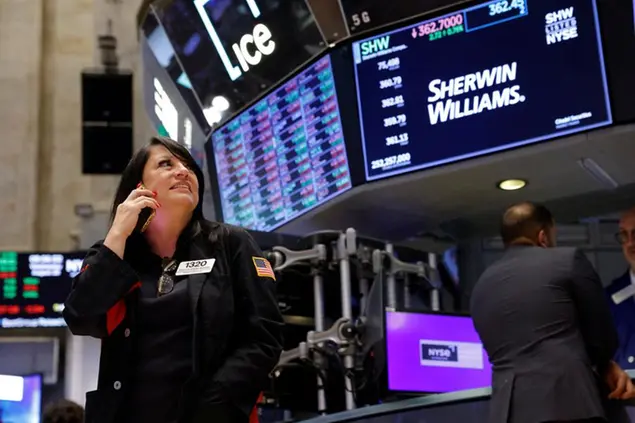PHOTO
Interest in leveraged exchange-traded funds that allow investors to profit when shares of Nvidia fall grew steadily ahead of the chipmaker's quarterly results, according to data from some of the companies that issued the products.
Nvidia, which in June eclipsed Microsoft as the world's most valuable company, dominates the major stock indexes, making its quarterly results an increasingly high-stakes market event.
In a sign of investor anxiety about Nvidia's ability to beat mounting earnings expectations, the number of shares outstanding in leveraged inverse ETFs that offer a bearish view on the chipmaker grew far more rapidly in recent months than those offering leveraged bullish exposure, issuer data shows.
These bearish products are structured to deliver daily returns twice the size of any loss in Nvidia itself, while the bullish ETFs use derivatives to double any daily gain.
"You can read into that data the changing sentiment about Nvidia's outlook," said Will Rhind, CEO of GraniteShares. "As Nvidia becomes more volatile, we seem to be witnessing greater interest in taking a position in the bear ETF."
Nvidia's stock dropped after its quarterly forecast failed to meet investors' lofty expectations.
The number of shares outstanding in the GraniteShares 2x Short NVDA Daily ETF soared 446% between May 21 - just before Nvidia released its previous quarterly earnings - and Wednesday, when the chipmaker issued its most recent results.
That compares to a gain in shares outstanding of only 85% for its bull leveraged product, the GraniteShares 2x Long NVDA Daily ETF.
The discrepancy is even more pronounced in similar ETFs issued by REX Shares and Tuttle Capital Management. The number of shares outstanding in the T-Rex 2x Inverse Nvidia Daily ETF has increased tenfold since Nvidia's May earnings report.
Leveraged ETFs tied to other widely-traded stocks such as Alphabet and Microsoft also exist, but the largest and most active are based on Nvidia and Tesla, reflecting the high profile and volatility of both companies' shares.
Some new investors drawn to the leveraged bearish ETFs may be worried about volatility in Nvidia itself as each earnings report drives expectations higher, said Scott Acheychek, chief operating officer of REX Financial. Others see the ETFs as a way to hedge underlying long positions or manage tax obligations.
To be sure, the bullish products still dominate leveraged Nvidia ETFs in size and growth as measured by dollar value. The GraniteShares 2x Long NVDA Daily ETF has $6 billion in assets and has attracted $2.95 billion of inflows in the last three months, according to data from VettaFi.
Its 2x bearish ETF, in spite of the dramatic relative growth, boasts only $69 million in assets, although it attracted $63 million in inflows in the last three months. (Reporting by Suzanne McGee; editing by Michelle Price and Rod Nickel)
